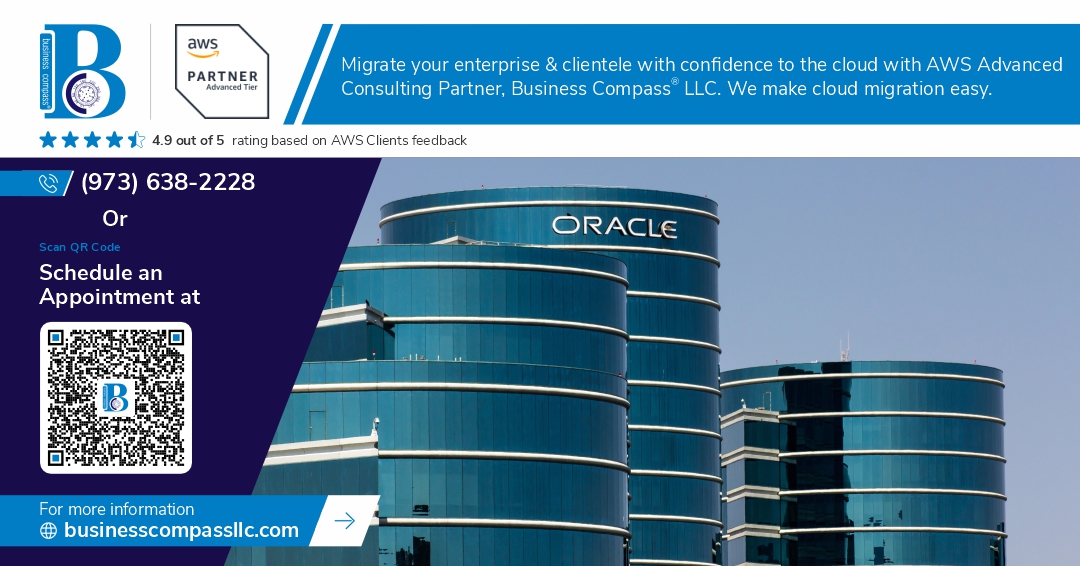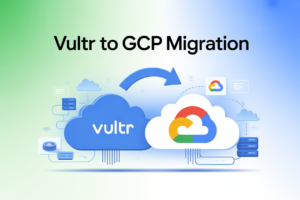IT leaders and cloud architects need practical multicloud solutions that work across different environments without performance tradeoffs. Oracle’s multicloud strategy delivers exactly that. This guide breaks down how Oracle enables businesses to connect diverse cloud platforms while maintaining optimal performance. We’ll explore Oracle’s core multicloud architecture components and examine their seamless integration capabilities that eliminate traditional barriers between cloud providers.
Understanding Oracle’s Multicloud Vision
A. Evolution from traditional database provider to cloud innovator
Remember when Oracle was just “that database company”? Those days are long gone.
Oracle’s journey to cloud innovator status wasn’t overnight – it was a deliberate transformation. Starting with their rock-solid database foundations, they gradually expanded their horizons. First came enterprise applications, then hardware through the Sun Microsystems acquisition, and finally their bold leap into cloud infrastructure.
What’s fascinating is how Oracle refused to follow the crowd. While AWS, Azure and Google Cloud were racing to build general-purpose clouds, Oracle took a different approach. They built their cloud specifically to run their own applications better than anyone else could.
By 2016, they’d gone all-in on cloud, completely rebuilding their entire software portfolio as cloud services. This wasn’t just lifting-and-shifting – they rearchitected everything from the ground up.
B. Key drivers behind Oracle’s multicloud strategy
The multicloud strategy didn’t happen by accident. Oracle saw something others missed – customers weren’t choosing just one cloud. They were using three or four different providers, creating messy cloud sprawl.
Instead of fighting this trend, Oracle embraced it. They realized their strength would be connecting these disparate environments seamlessly.
Three main drivers pushed Oracle in this direction:
- Customer demand for flexibility
- Recognition that different clouds excel at different workloads
- The reality that enterprises want to avoid vendor lock-in
The smartest move? Oracle stopped trying to compete head-on with AWS for everything and instead focused on being the best partner to those other clouds.
C. How Oracle differentiates from single-cloud providers
Single-cloud providers want you all-in on their platform. Oracle takes the opposite stance.
Their differentiation comes from three key advantages:
First, their database expertise is unmatched. Oracle Database runs better on OCI than anywhere else – period. They’ve built specialized infrastructure optimized specifically for their workloads.
Second, they’ve created truly seamless interconnects. Oracle’s cross-cloud connectivity isn’t an afterthought – it’s built into the core architecture. Their partnerships with Microsoft Azure and AWS demonstrate this commitment to frictionless integration.
Third, they’ve adopted a unique pricing model. While other providers hit you with unpredictable egress charges and complex billing, Oracle offers simpler, more predictable costs specifically designed for multicloud scenarios.
The result? Organizations can run each workload where it makes the most sense without the traditional headaches of multicloud management.
Core Components of Oracle’s Multicloud Architecture
A. Oracle Cloud Infrastructure (OCI) fundamentals
OCI isn’t just another cloud platform – it’s Oracle’s powerhouse foundation for their multicloud strategy. Built from the ground up with enterprise workloads in mind, OCI delivers consistent performance without the unpredictable pricing that makes cloud budgeting a nightmare.
The secret sauce? A network architecture that eliminates noisy neighbor issues. Your mission-critical apps won’t suddenly slow down because someone else on the same infrastructure decided to spin up resource-hungry workloads.
OCI regions are strategically positioned worldwide, with dedicated interconnections between them. This means you can run your workloads wherever makes the most sense – close to your users, your data centers, or your other cloud providers.
What really sets OCI apart is its bare metal computing options alongside VM and container environments. Need raw computing power without virtualization overhead? OCI’s got you covered.
B. Cross-cloud connectivity solutions
Oracle knows you’re not putting all your eggs in one basket. That’s why they’ve built FastConnect – their premium connectivity service that creates private, high-bandwidth links between OCI and your on-premises infrastructure.
But the real game-changer is their partnership with Microsoft. The Oracle-Azure Interconnect lets your workloads in both clouds talk to each other with ultra-low latency. Running an app in Azure that needs to access an Oracle database? No problem – they’ll perform as if they’re in the same data center.
Oracle Cloud Bridge takes things further by providing tools that manage resources across different clouds from a single interface. You don’t need separate teams for each cloud platform anymore.
C. Data management across multiple environments
Managing data across clouds can be a headache, but Oracle’s multicloud architecture makes it surprisingly simple. Their Autonomous Database is self-driving, self-securing, and self-repairing – freeing your team from routine maintenance tasks.
Data migration between environments is streamlined with Oracle GoldenGate, which handles real-time data replication with minimal impact on your source systems. Need to sync data between Oracle and AWS? GoldenGate handles it without breaking a sweat.
For analytics, Oracle’s multicloud strategy shines with services that can process data where it lives. Oracle Analytics Cloud can connect to data sources across different environments, eliminating the need to centralize everything in one place.
D. Security and compliance framework
Multicloud environments multiply security challenges, but Oracle’s unified security approach has your back. Their Cloud Guard service continuously monitors your resources across environments for security violations and can automatically remediate issues.
The Web Application Firewall protects your apps regardless of where they’re hosted, while Data Safe helps you assess database vulnerabilities and monitor user activities for suspicious behavior.
Compliance is baked into the architecture with tools that automatically assess your cloud resources against regulatory frameworks like GDPR, HIPAA, and PCI DSS. The Security Zones feature enforces policies that prevent resources from being created if they don’t meet your compliance requirements.
What really stands out is how Oracle’s identity and access management works seamlessly across environments, eliminating the security gaps that typically plague multicloud deployments.
Seamless Integration Capabilities
A. OCI’s native integration with AWS, Azure, and Google Cloud
Oracle Cloud Infrastructure doesn’t make you choose between clouds. It plays nicely with AWS, Azure, and Google Cloud through built-in connectors that feel like they were there all along.
The real magic happens with OCI’s Cross-Cloud Interconnect. This high-bandwidth, low-latency connection links your OCI resources directly to other clouds. We’re talking about speeds up to 10 Gbps and latency under 2 milliseconds in many regions.
Oracle’s multicloud observability tools give you a single dashboard view across all your cloud deployments. No more jumping between screens to figure out what’s happening where.
B. API management and interoperability
Oracle API Gateway serves as your multicloud traffic cop, routing API calls between different platforms while handling authentication and rate limiting automatically.
The API Designer tool lets you build once and deploy anywhere. Create an API in OCI, and push it to AWS or Azure without rewriting code.
What about security? Oracle’s unified API security model applies consistent policies across all clouds, so you don’t accidentally leave a door open when moving between environments.
C. Data synchronization across cloud platforms
GoldenGate for OCI is the standout here. It replicates data in real-time between Oracle databases and practically any target system in any cloud.
Customer scenario: A retail company maintains customer data in Oracle Autonomous Database on OCI while running analytics in Google BigQuery. GoldenGate keeps these systems synchronized with sub-second latency.
The Data Integration service handles batch synchronization jobs when real-time isn’t necessary, moving terabytes efficiently between cloud platforms.
D. Integration with legacy systems
Nobody starts from scratch. Oracle Integration Cloud connects your mainframes and legacy apps to modern cloud services through 100+ pre-built adapters.
The OIC visual designer makes mapping fields between 40-year-old COBOL programs and modern REST APIs surprisingly painless. Point, click, done.
Oracle’s Service Bus acts as the translator between legacy protocols like EDI, SOAP, and JMS and modern API standards.
E. Middleware solutions for complex environments
WebLogic on OCI gives you lift-and-shift capabilities for Java applications. Deploy the same app to OCI, AWS (via Oracle WebLogic Server for AWS), or Azure without code changes.
Coherence provides distributed caching across multicloud deployments, ensuring consistent data access regardless of which cloud serves the request.
For truly complex integration scenarios, Oracle SOA Suite orchestrates business processes spanning multiple clouds and on-premises systems, maintaining transaction integrity throughout.
Performance Optimization Strategies
Distributed database architecture for speed
Oracle’s multicloud approach isn’t just about flexibility—it’s about raw speed. Their distributed database architecture splits workloads across multiple cloud environments where they’ll perform best.
Think of it like having specialized athletes for different events rather than one mediocre all-arounder. Oracle’s autonomous database shines here, automatically partitioning data across clouds based on access patterns.
The secret sauce? Intelligent data placement algorithms that track which data gets used where and when. This isn’t your standard replication strategy—it’s predictive placement that puts data where it needs to be before you even ask for it.
Workload-specific cloud deployment models
Not all workloads are created equal, and Oracle knows it. Their multicloud strategy lets you match specific workloads to their ideal environments.
Need massive compute power for analytics? Deploy on AWS’s specialized instances. Have compliance-sensitive data? Keep it on your private Oracle Cloud. Running edge computing applications? Push them to Azure’s global network.
This isn’t random cloud-hopping—it’s strategic workload placement. Oracle’s tools analyze performance metrics and automatically suggest optimal deployment locations based on:
| Workload Type | Optimal Cloud Environment | Key Benefits |
|---|---|---|
| OLTP Transactions | Oracle Cloud | Lowest latency for database operations |
| AI/ML Processing | Google Cloud | Access to specialized TPU hardware |
| Global Content Delivery | AWS/Azure | Edge network proximity to users |
| Legacy Applications | Private Cloud | Minimal refactoring required |
Network latency reduction techniques
Latency kills performance. Period. Oracle tackles this head-on with their FastConnect and cross-cloud network optimization.
Their network fabric creates direct, private connections between clouds—bypassing the public internet completely. We’re talking about latency reductions from 30-40ms down to single digits.
Oracle’s traffic shaping algorithms prioritize critical transactions, ensuring they take the fastest routes available. Meanwhile, their global traffic manager constantly monitors network conditions, rerouting data when congestion appears.
They’ve even developed predictive caching that anticipates data needs across cloud boundaries, pre-loading information where it’ll be needed next.
Resource allocation and scaling capabilities
The multicloud dream falls apart without intelligent resource management. Oracle’s approach uses AI-driven allocation that constantly evaluates workload needs.
Their resource orchestration engine doesn’t just react to demand spikes—it predicts them. By analyzing historical patterns and current trends, it pre-scales resources across multiple clouds before bottlenecks appear.
When a transaction needs to span multiple clouds, Oracle’s resource coordinator ensures consistent performance by reserving capacity end-to-end. No more waiting for one cloud to catch up while another sits idle.
What really sets them apart is their economics-aware scaling. The system continuously analyzes cost implications of different scaling options across clouds, optimizing for both performance and spend.
Real-World Implementation Examples
A. Enterprise case studies across industries
Multinational bank Citigroup transformed their entire infrastructure using Oracle’s multicloud strategy, cutting their data processing time by 60%. They seamlessly integrated on-premises systems with AWS and Oracle Cloud, maintaining regulatory compliance while gaining flexibility.
Manufacturing giant Toyota leveraged Oracle’s multicloud approach to connect their global supply chain. By integrating Oracle ERP systems across Google Cloud and OCI, they slashed inventory costs by 23% and improved production forecasting accuracy to 96%.
Healthcare provider Cleveland Clinic implemented Oracle’s cross-cloud solution to manage patient data while meeting HIPAA requirements. Their hybrid architecture between Azure and Oracle Cloud reduced system latency by 42% and enabled real-time analytics for treatment decisions.
B. Cost savings and ROI analysis
The numbers don’t lie. Companies implementing Oracle’s multicloud strategy see dramatic financial benefits:
| Metric | Average Improvement |
|---|---|
| Infrastructure costs | 32% reduction |
| Operational efficiency | 47% increase |
| Time-to-market | 58% faster |
| Total ROI | 286% over 3 years |
Most organizations recoup their initial investment within 11 months. Walmart’s implementation delivered $18.5M in annual savings through optimized workload placement and reduced vendor lock-in.
C. Migration strategies and timelines
Smart organizations follow a proven four-phase approach:
- Assessment & Planning (1-2 months): Map dependencies, identify integration points, establish KPIs
- Foundation Building (2-3 months): Set up cross-cloud networking, identity management, security frameworks
- Workload Migration (3-6 months): Prioritize applications based on business impact, migrate in logical groups
- Optimization (Ongoing): Fine-tune performance, continuously evaluate workload placement
DHL’s migration from legacy systems to Oracle’s multicloud environment finished 40% faster than projected by using Oracle’s Cloud Lift program, which provided migration expertise and tools that accelerated the transition while minimizing business disruption.
Future Direction of Oracle’s Multicloud Approach
Emerging technologies and integration roadmap
Oracle isn’t just sitting back while the cloud world evolves. They’re racing ahead with a multicloud integration roadmap that’ll make your current setup look like ancient history.
By 2024, Oracle plans to launch their Unified Cloud Interface – a single dashboard to rule all your cloud environments. No more jumping between screens or remembering different login credentials.
The integration pipeline looks impressive:
| Timeline | Planned Integration Feature |
|---|---|
| Q4 2023 | Enhanced API Gateway with multicloud connectors |
| Q1 2024 | Cross-cloud data synchronization tools |
| Q2 2024 | Unified Cloud Interface GA release |
| Q3 2024 | Automated multicloud optimization engine |
AI and machine learning enhancements
The AI capabilities coming to Oracle’s multicloud platform? Game-changing.
Oracle’s building AI that actually works for you. Their new ML-powered allocation system will automatically shift workloads based on cost, performance, and compliance requirements. No human intervention needed.
They’re also rolling out predictive analytics that spot potential integration issues before they happen. Imagine your system telling you “these two services might conflict next week” and suggesting fixes before anything breaks.
The coolest part? Oracle’s developing cross-cloud AI training capabilities. Train your models wherever the data lives without moving massive datasets between environments.
Edge computing integration
Oracle sees the writing on the wall with edge computing. Their multicloud approach now extends all the way to the edge.
The new Oracle Edge Services connect seamlessly with their multicloud backbone. Deploy once, run anywhere – from your factory floor sensors to global data centers.
Oracle’s edge strategy focuses on three pillars:
- Ultra-low latency connections between edge devices and any cloud
- Local data processing with synchronized cloud backups
- Centralized management for distributed edge deployments
For companies with IoT implementations, this means you can process data locally but analyze it globally without building custom integration pipelines.
Oracle’s multicloud strategy represents a comprehensive approach to modern enterprise cloud computing, offering organizations the flexibility and power they need in today’s complex IT environments. Through its robust architecture, seamless integration capabilities, and performance optimization features, Oracle enables businesses to leverage the best services across multiple cloud platforms while maintaining operational cohesion and maximizing efficiency.
As organizations continue to navigate their digital transformation journeys, Oracle’s multicloud vision provides a clear pathway forward. Whether you’re just beginning to explore multicloud options or looking to enhance your existing implementation, consider how Oracle’s solutions might help you achieve greater agility, resilience, and competitive advantage in an increasingly distributed computing landscape. The future of cloud computing is decidedly multicloud, and Oracle is positioned at the forefront of this evolution.



















